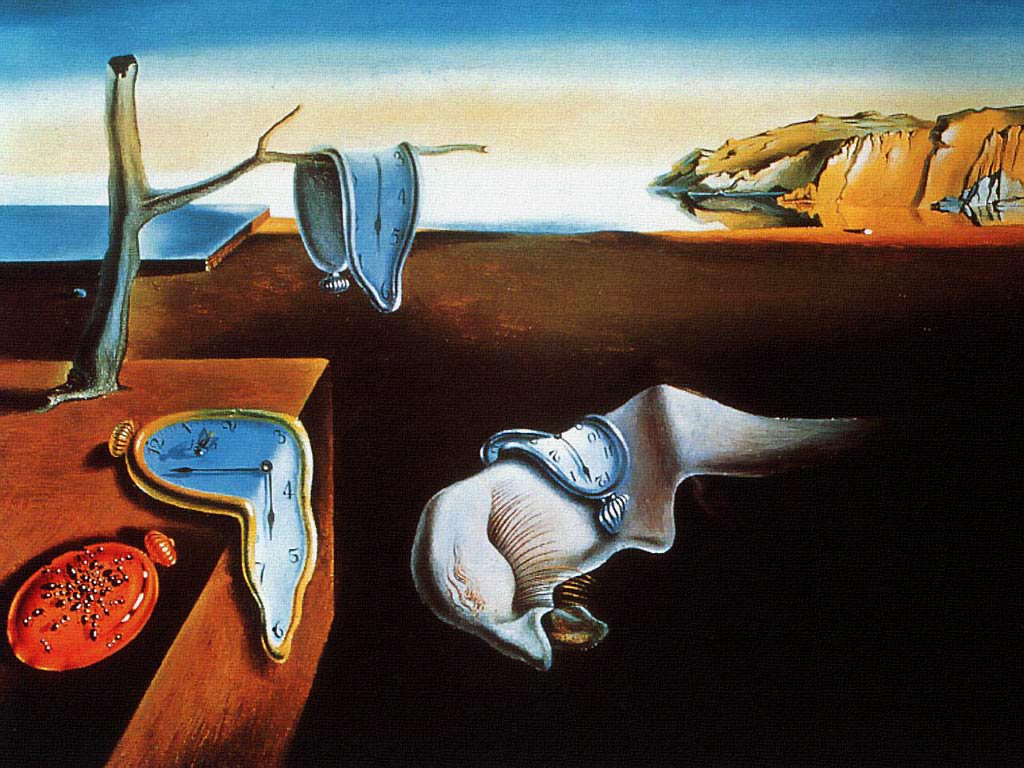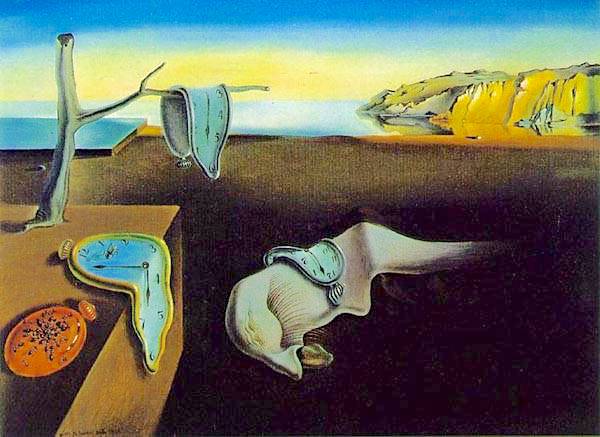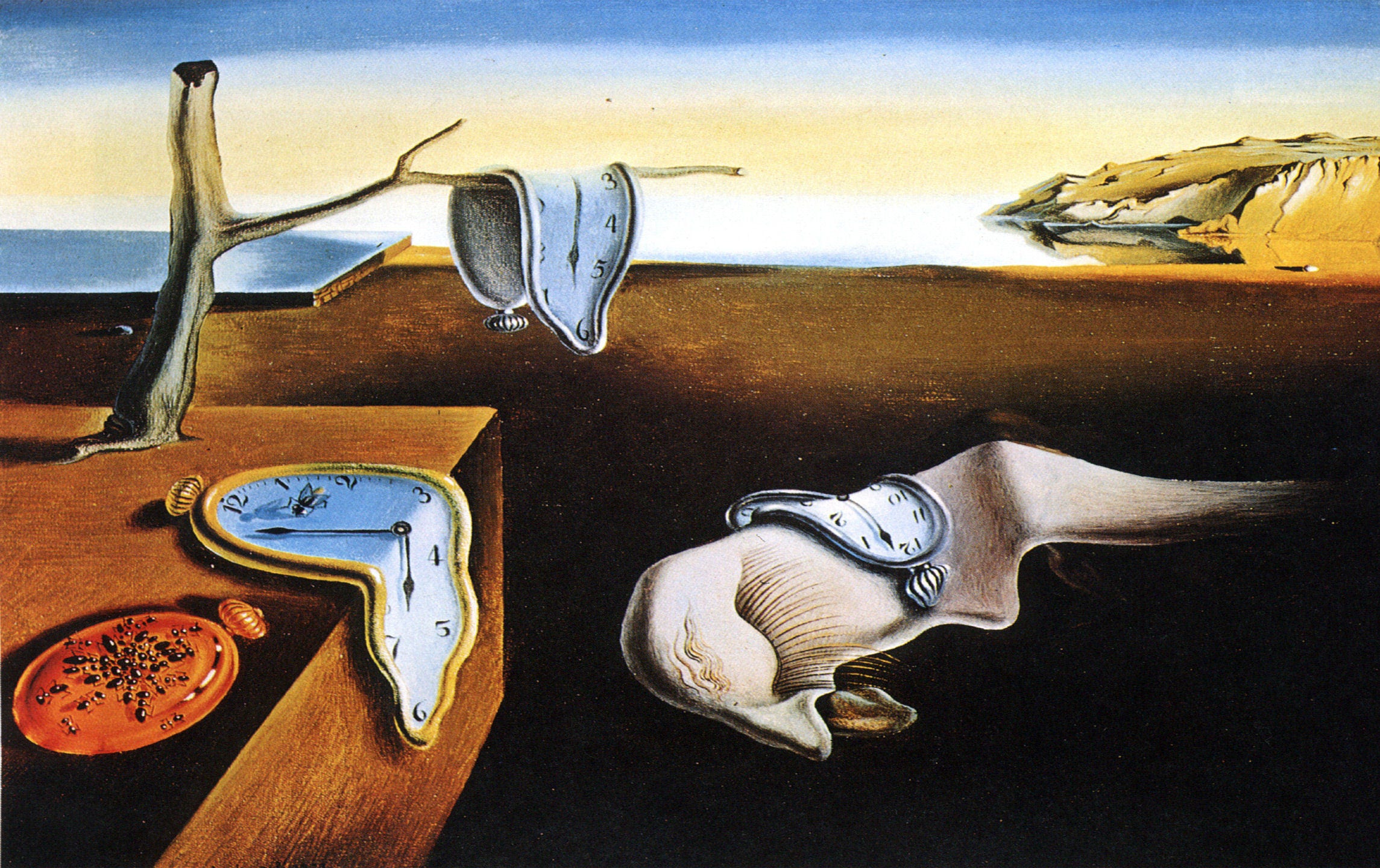

It echoes the passing of time as it is turned over and covered by ants. Each watch is placed on a different surface, and represent these three temporalities. As in our dreams, past, present and future coexist and function in synergy. Three soft watches symbolize time, which is relative, in movement.Are we at the mercy of time? One thing Dalí makes very clear, is that time passes but leaves behind memories the memory persists. We must be break down the painting into different elements, as numbered above: It cements the artist’s obsession for its symbolism. The artwork opposes Surrealism to reality and questions the ineluctability of time. Salvador Dalí’s The Persistence of Memory plunges the viewer into a dreamlike and definitely strange universe where hard and soft surfaces coexist. It was waiting for them The Persistence of the Memory is born.Īnalysis of The Persistence of Memory, 1931, Salvador Dalí © Sympa Sympa What’s the meaning behind Salvador Dalí’s The Persistence of Memory? Dalí paints his watches over the landscape that was done prior to that. This method led to the cheese transforming into soft melting pocket watches ! They are reminiscent of the artist’s fascination for temporality. Once this is over, he’s ready to objectify them.

First, Dalí fantasizes and allows his most delirious thoughts to manifest themselves. The latter is built in two perfectly opposite steps. The artist then let his mind wander and resorted to an artistic technique of his own creation: the paranoiac-critical method. Dalí ended up sitting alone in the middle of a strangely quiet kitchen… In the center of his plate, melting camembert caught his eye.


The idea for the painting came to him while Gala and some friends were out at the cinema. The twilight sky of The Persistence of Memory is that of a beach near Portlligat, in the north of Catalonia, where the artist grew up. Portrait of the artist with Gala © Fundació Gala-Salvador Dalí Dalí and his paranoiac-critical method He’s fully exploring his Surrealist period. At the time when he paints The Persistence of Memory, Dalí is reconstructing himself, both personally and artistically. He’s introduced to the woman he’ll soon marry, Gala, via her then-husband, Paul Éluard. Themes such as the unconscious, dreams, time and death are explored in the multidisciplinary movement. Salvador Dalí joins the Surrealists in 1929 after meeting some members of the group, thanks to Miró. Obviously, Surrealism is deeply inspired by psychoanalysis. This idea lives through Surrealism, which its founder André Breton defines as “a pure psychic automatism, in the absence of any control exercised by reason,” ( Manifesto of Surrealism, 1924). The group rejects the conventional definitions of art and its traditions. It is from this deep disgust that the spirit of Dadaism is born. Prior to that, the Great War unveiled an unprecedented brutality, which is rejected by a new generation of artists. The events led to Franco’s accession to power in 1939. Spain experienced a period of great poverty, caught right in between two totalitarian regimes: a monarchy and a dictature. Indeed, the country was experiencing the early beginnings of the Second Spanish Republic, which was soon disrupted by the Civil War in 1936. During this year, Spain suffered from great political instability. The creation of The Persistence of Memory dates back to 1931. Photograph of Madrid on Ap© L’Humanité A masterpiece of its time


 0 kommentar(er)
0 kommentar(er)
